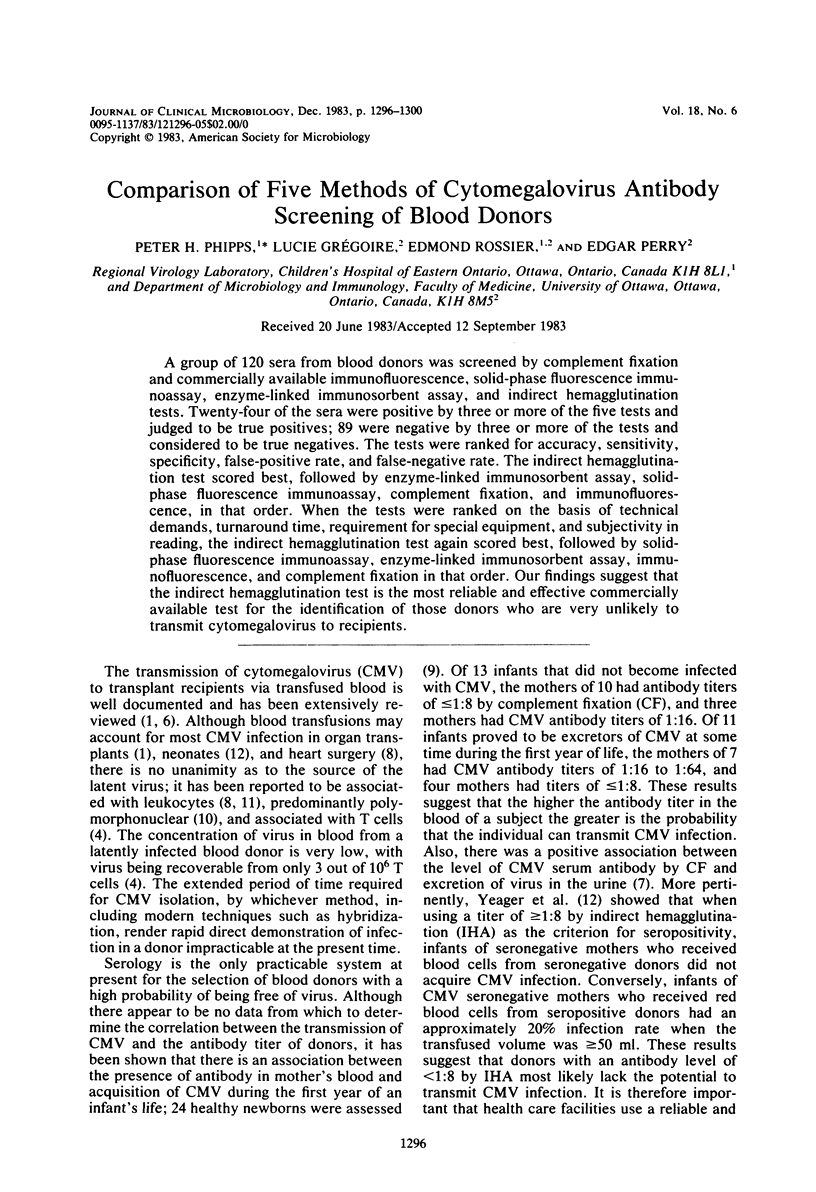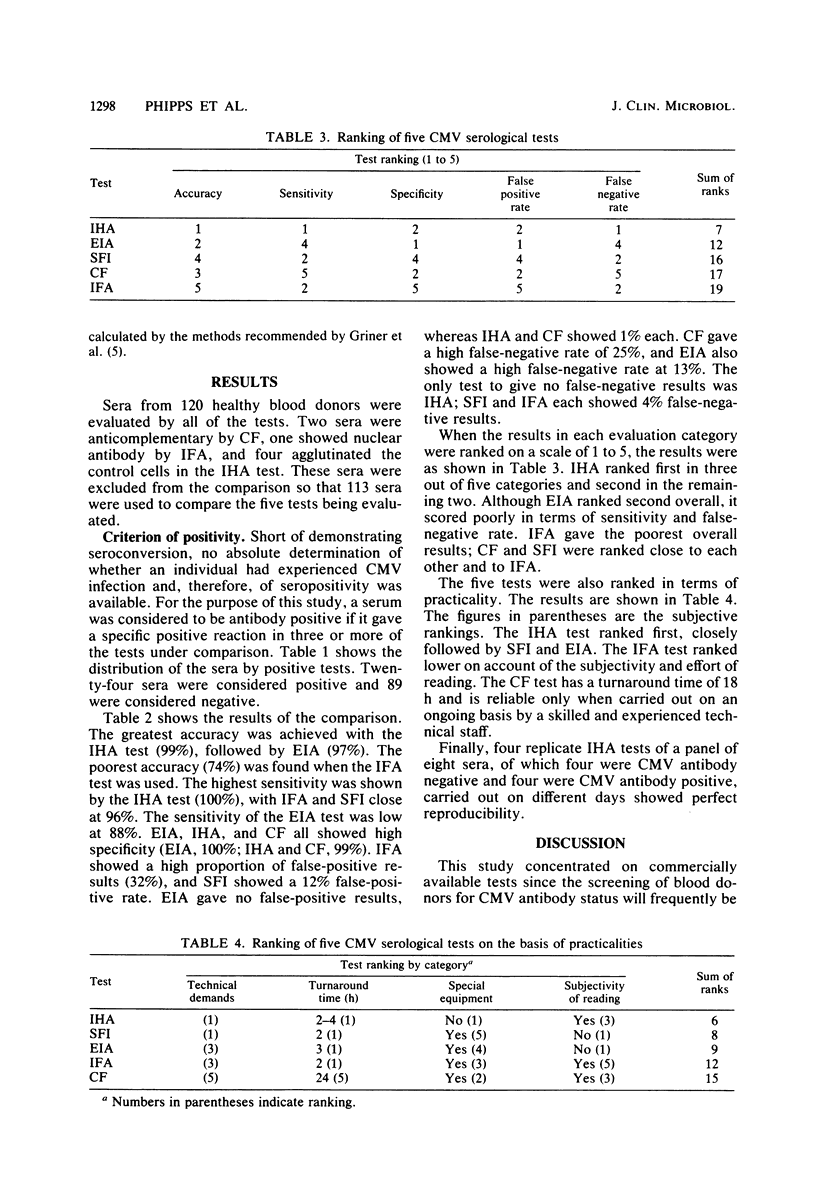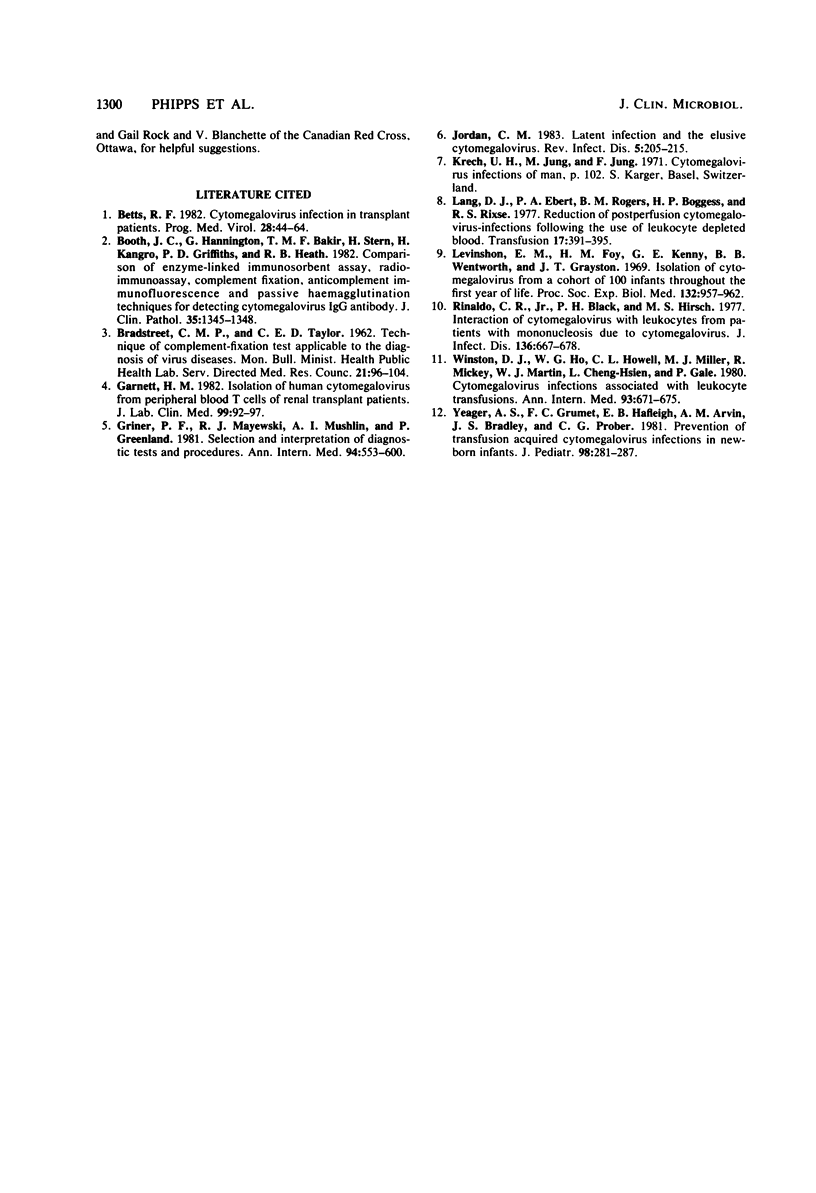Abstract
A group of 120 sera from blood donors was screened by complement fixation and commercially available immunofluorescence, solid-phase fluorescence immunoassay, enzyme-linked immunosorbent assay, and indirect hemagglutination tests. Twenty-four of the sera were positive by three or more of the five tests and judged to be true positives; 89 were negative by three or more of the tests and considered to be true negatives. The tests were ranked for accuracy, sensitivity, specificity, false-positive rate, and false-negative rate. The indirect hemagglutination test scored best, followed by enzyme-linked immunosorbent assay, solid-phase fluorescence immunoassay, complement fixation, and immunofluorescence, in that order. When the tests were ranked on the basis of technical demands, turnaround time, requirement for special equipment, and subjectivity in reading, the indirect hemagglutination test again scored best, followed by solid-phase fluorescence immunoassay, enzyme-linked immunosorbent assay, immunofluorescence, and complement fixation in that order. Our findings suggest that the indirect hemagglutination test is the most reliable and effective commercially available test for the identification of those donors who are very unlikely to transmit cytomegalovirus to recipients.
Full text
PDF




Selected References
These references are in PubMed. This may not be the complete list of references from this article.
- BRADSTREET C. M., TAYLOR C. E. Technique of complementfixation test applicable to the diagnosis of virus diseases. Mon Bull Minist Health Public Health Lab Serv. 1962 May;21:96–104. [PubMed] [Google Scholar]
- Betts R. F. Cytomegalovirus infection in transplant patients. Prog Med Virol. 1982;28:44–64. [PubMed] [Google Scholar]
- Booth J. C., Hannington G., Bakir T. M., Stern H., Kangro H., Griffiths P. D., Heath R. B. Comparison of enzyme-linked immunosorbent assay, radioimmunoassay, complement fixation, anticomplement immunofluorescence and passive haemagglutination techniques for detecting cytomegalovirus IgG antibody. J Clin Pathol. 1982 Dec;35(12):1345–1348. doi: 10.1136/jcp.35.12.1345. [DOI] [PMC free article] [PubMed] [Google Scholar]
- Garnett H. M. Isolation of human cytomegalovirus from peripheral blood T cells of renal transplant patients. J Lab Clin Med. 1982 Jan;99(1):92–97. [PubMed] [Google Scholar]
- Jordan M. C. Latent infection and the elusive cytomegalovirus. Rev Infect Dis. 1983 Mar-Apr;5(2):205–215. doi: 10.1093/clinids/5.2.205. [DOI] [PubMed] [Google Scholar]
- Lang D. J., Ebert P. A., Rodgers B. M., Boggess H. P., Rixse R. S. Reduction of postperfusion cytomegalovirus-infections following the use of leukocyte depleted blood. Transfusion. 1977 Jul-Aug;17(4):391–395. doi: 10.1046/j.1537-2995.1977.17477216868.x. [DOI] [PubMed] [Google Scholar]
- Levinsohn E. M., Foy H. M., Kenny G. E., Wentworth B. B., Grayston J. T. Isolation of cytomegalovirus from a cohort of 100 infants throughout the first year of life. Proc Soc Exp Biol Med. 1969 Dec;132(3):957–962. doi: 10.3181/00379727-132-34345. [DOI] [PubMed] [Google Scholar]
- Rinaldo C. R., Jr, Black P. H., Hirsch M. S. Interaction of cytomegalovirus with leukocytes from patients with mononucleosis due to cytomegalovirus. J Infect Dis. 1977 Nov;136(5):667–678. doi: 10.1093/infdis/136.5.667. [DOI] [PubMed] [Google Scholar]
- Winston D. J., Ho W. G., Howell C. L., Miller M. J., Mickey R., Martin W. J., Lin C. H., Gale R. P. Cytomegalovirus infections associated with leukocyte transfusions. Ann Intern Med. 1980 Nov;93(5):671–675. doi: 10.7326/0003-4819-93-5-671. [DOI] [PubMed] [Google Scholar]
- Yeager A. S., Grumet F. C., Hafleigh E. B., Arvin A. M., Bradley J. S., Prober C. G. Prevention of transfusion-acquired cytomegalovirus infections in newborn infants. J Pediatr. 1981 Feb;98(2):281–287. doi: 10.1016/s0022-3476(81)80662-2. [DOI] [PubMed] [Google Scholar]


